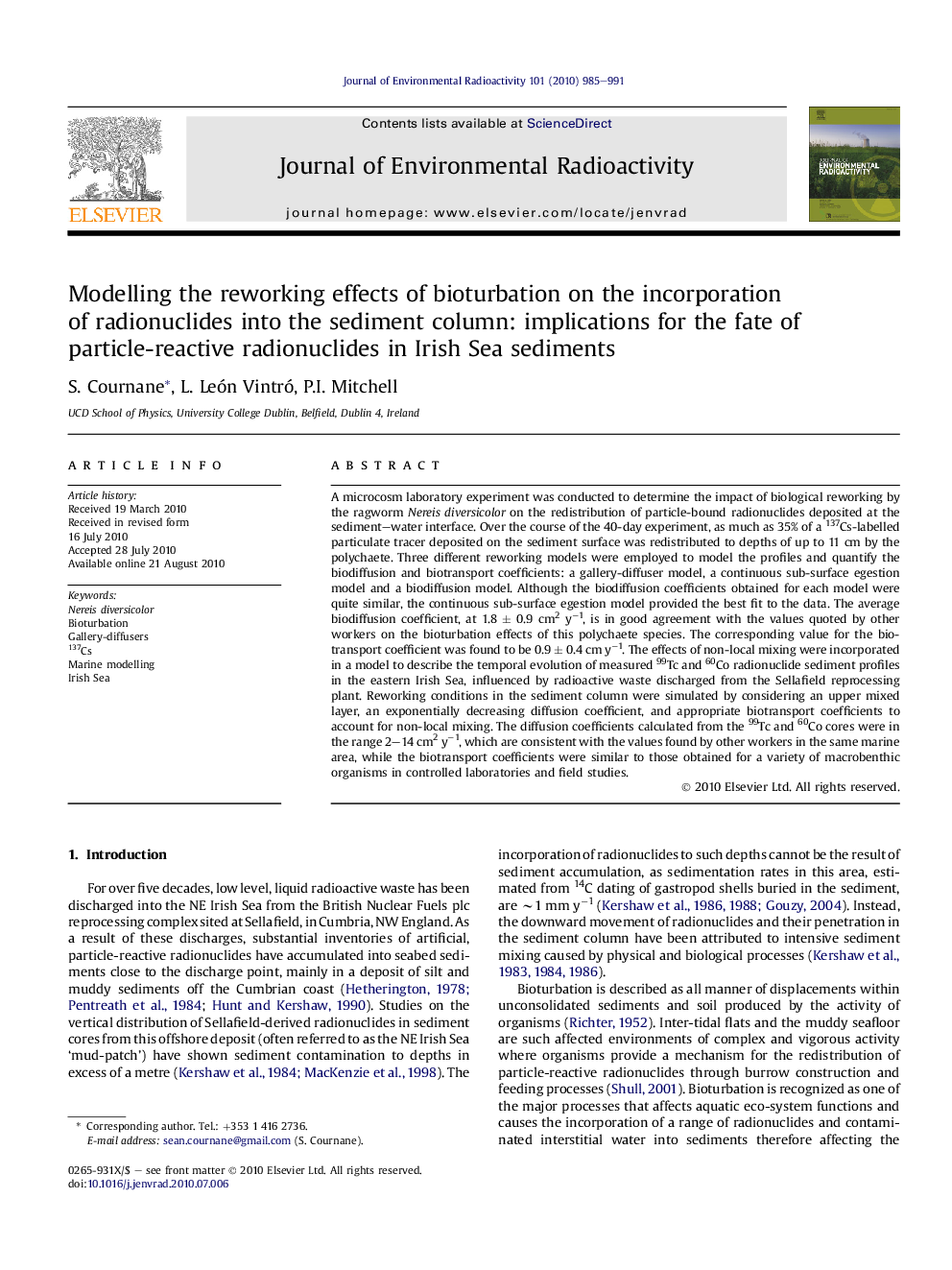| کد مقاله | کد نشریه | سال انتشار | مقاله انگلیسی | نسخه تمام متن |
|---|---|---|---|---|
| 1738612 | 1016802 | 2010 | 7 صفحه PDF | دانلود رایگان |

A microcosm laboratory experiment was conducted to determine the impact of biological reworking by the ragworm Nereis diversicolor on the redistribution of particle-bound radionuclides deposited at the sediment–water interface. Over the course of the 40-day experiment, as much as 35% of a 137Cs-labelled particulate tracer deposited on the sediment surface was redistributed to depths of up to 11 cm by the polychaete. Three different reworking models were employed to model the profiles and quantify the biodiffusion and biotransport coefficients: a gallery-diffuser model, a continuous sub-surface egestion model and a biodiffusion model. Although the biodiffusion coefficients obtained for each model were quite similar, the continuous sub-surface egestion model provided the best fit to the data. The average biodiffusion coefficient, at 1.8 ± 0.9 cm2 y−1, is in good agreement with the values quoted by other workers on the bioturbation effects of this polychaete species. The corresponding value for the biotransport coefficient was found to be 0.9 ± 0.4 cm y−1. The effects of non-local mixing were incorporated in a model to describe the temporal evolution of measured 99Tc and 60Co radionuclide sediment profiles in the eastern Irish Sea, influenced by radioactive waste discharged from the Sellafield reprocessing plant. Reworking conditions in the sediment column were simulated by considering an upper mixed layer, an exponentially decreasing diffusion coefficient, and appropriate biotransport coefficients to account for non-local mixing. The diffusion coefficients calculated from the 99Tc and 60Co cores were in the range 2–14 cm2 y−1, which are consistent with the values found by other workers in the same marine area, while the biotransport coefficients were similar to those obtained for a variety of macrobenthic organisms in controlled laboratories and field studies.
Research highlights
► N. diversicolor redistributes up to 35% particle-bound radionuclide over 40 days.
► Non-local reworking models used to model redistribution processes.
► Biodiffusion and biotransport coefficients of 1.8 ± 0.9 cm2 y−1 and 0.9 ± 0.4 cm y−1.
► Models applied to describe measured 99Tc and 60Co in sediments of eastern Irish Sea.
Journal: Journal of Environmental Radioactivity - Volume 101, Issue 11, November 2010, Pages 985–991